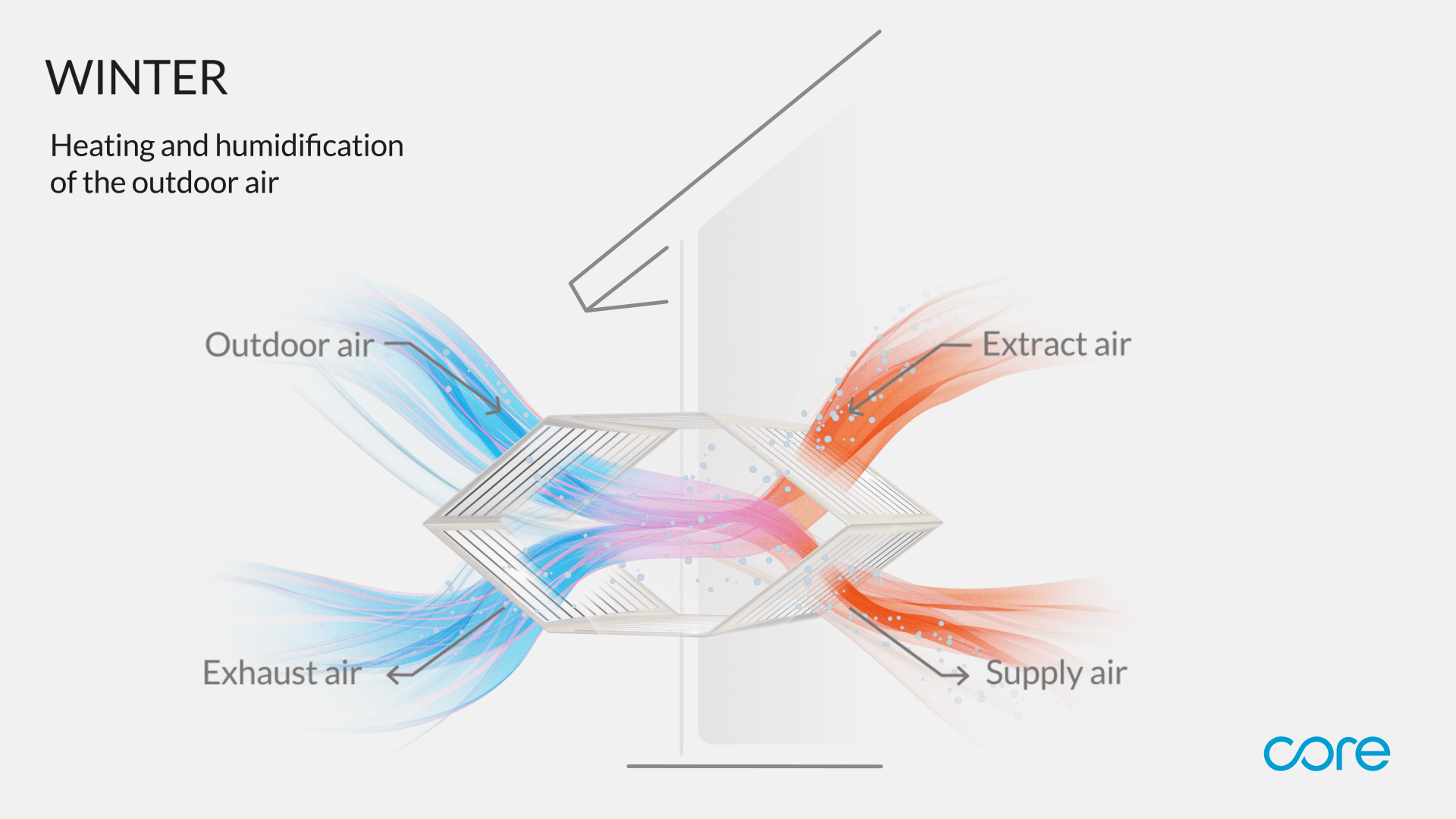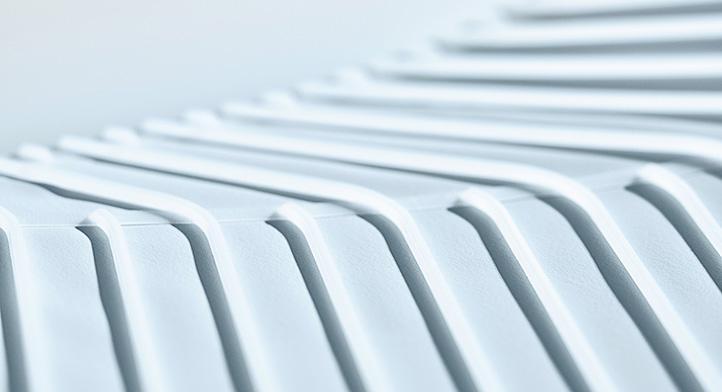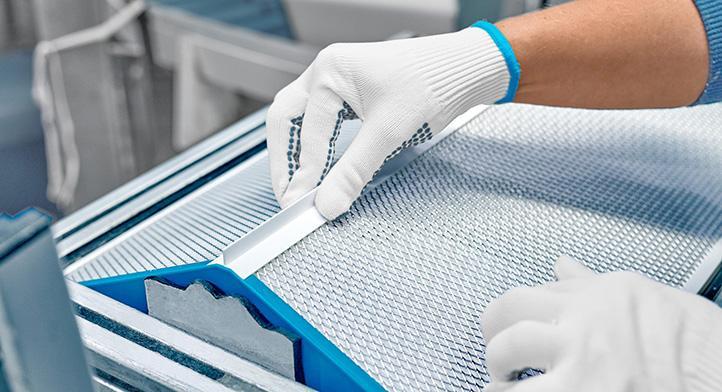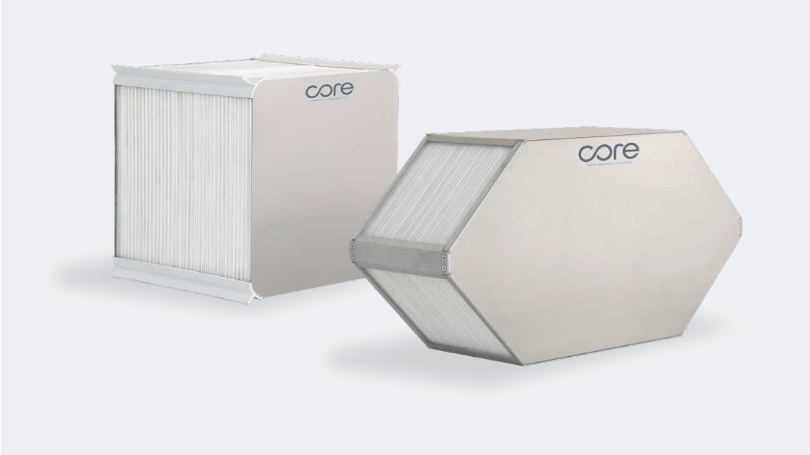All about enthalpy exchangers
What is an enthalpy exchanger?
Anyone who investigates heat exchangers quickly notices that another term is often used in this context: Enthalpy exchanger. But what exactly is an enthalpy exchanger? And what is the difference between a heat exchanger (HRV) and an enthalpy exchanger (ERV)? Here we explain how enthalpy exchangers work and where their use makes sense.
What is the difference between a heat exchanger and an enthalpy exchanger?
Generally, an enthalpy exchanger (ERV) fulfills the same function as a conventional heat exchanger (HRV). It transfers heat of the extract air to the supply air or vice versa. This is called heat recovery. But enthalpy exchangers also transfer something else: energy in the form of moisture.
In comparison to a standard heat exchanger, enthalpy exchangers have an integrated moisture-permeable polymer membrane. It separates the supply air from the extract air. This also transfers the water vapor and the heat it contains from one air stream to the other.
What is special: The membrane is permeable to moisture, but not to air pollutants such as viruses, bacteria or mold spores. These remain on the extract air side. This ensures that contaminants cannot get back into the building.
In this way, enthalpy exchangers not only ensure efficient and resource-saving heating or cooling, but also maintain a constant air-humidity and comfort level when ventilating indoor spaces.

How enthalpy exchangers work in summer and winter
Enthalpy exchangers transfer heat and humidity. However, anyone who thinks that this is only worthwhile in the cold season is mistaken. This is because the use of an enthalpy exchanger makes sense both in summer and in winter, as its effect is reversed over the course of the seasons.
In summer, the enthalpy exchanger pre-cools and dehumidifies the hot and humid outdoor air. The incoming warmer outdoor air is cooled by the lower temperature extract air from the interior rooms. At the same time, excess moisture is removed directly with the extract air. When air conditioners are used, energy can be saved for cooling the interior rooms.
In winter, the effect is reversed. Now, cold temperatures with low humidity prevail outside, while it is significantly warmer in heated rooms. Classic shock ventilation would now cause the valuable heat and humidity in our interior spaces to be lost. Instead, ventilation systems with integrated enthalpy exchangers ensure that the heat and humidity in our interior spaces is transferred from the extract air to the cold outdoor air. This allows us to retain heat and humidity when ventilating. As a result, the indoor climate is more comfortable and heating energy is saved.


Why the use of enthalpy exchangers makes sense
In summary, there are both seasonal and year-round advantages to using an enthalpy exchanger in a ventilation system compared to classic ventilation or the use of a standard heat exchanger (HRV).

Like standard heat exchangers, enthalpy exchangers save energy for cooling in summer and for heating in winter. However, because enthalpy exchangers also transfer moisture, the additional energy bound in the moisture can be used. This results in better energy recovery and greater overall energy savings than using a standard heat exchanger.
An enthalpy exchanger also results in significantly lower energy consumption by the ventilation unit at cold outdoor temperatures. Because it produces less condensate, the enthalpy exchanger freezes later than a standard heat exchanger. This ultimately means that the defroster integrated in the ventilation unit consumes less energy.

By maintaining a constant temperature and humidity indoors, enthalpy exchangers can contribute to better air and thus a higher comfort. This is because humidity that is too low can have effects on health.
The most common complaints include dry and irritated mucous membranes, respiratory tracts or eyes. But headaches, tiredness and concentration problems can also be the result of low humidity, which people have to deal with indoors, especially in winter. In contrast, high humidity causes you to sweat quickly and promotes the growth of mold.
In addition, the polymer membrane inside the enthalpy exchanger ensures that viruses or bacteria are carried outside with the extract air and do not contaminate the supply air. This also greatly improves the air quality inside our buildings.
Not only people and animals, but also buildings and furniture benefit from stable humidity levels. This is because the use of an enthalpy exchanger protects against both mold and drying out.
Why you can rely on CORE enthalpy exchangers
Our CORE enthalpy exchangers (ERVs) are equipped with patented technology. It is based on 30 years of experience in the development of enthalpy exchangers and ensures that moisture is transferred in addition to heat.
We offer enthalpy exchangers in a variety of sizes and materials to meet different requirements. This means they can be used in both centralized and decentralized ventilation systems and in a wide range of environmental conditions.
With our latest innovation, the patented formable membrane, we have revolutionized the technology of enthalpy exchangers. CORE enthalpy exchangers equipped with this new membrane, such as the F-ERV 366, offer even more advantages in terms of efficiency and sustainability.

Additional topics
Counterflow heat exchanger vs. crossflow heat exchanger
What are the different types of heat exchangers? How do they work? And when is which technology suitable? We’ll explain all about the different types of heat exchangers.

The membrane in enthalpy exchangers
What is a membrane? And what role does it play in an enthalpy exchanger? We explain what a membrane is and how it enables the transfer of moisture.

Products and solutions
Wide variety of products, patented technology: With our wide-ranging portfolio of crossflow and counterflow heat exchangers, you will always find the right product for your application. And if needed, we can individually manufacture the right heat exchanger for your specific ventilation system.
